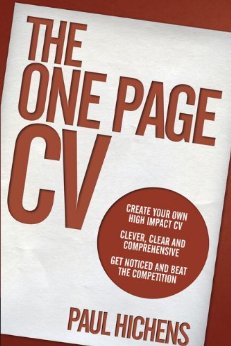case study – executive banker
Personal, informal and higher impact approach
The case study below highlights one job Paul recently did for a banking executive.
J, an executive banker (who is happy for us to summarise his comments but doesn’t want to be named), recently came to us for help. During his search for assistance he was particularly interested in finding what he considered to be the best writer for the job, and made specific enquiries to that effect; researching different companies/writers. Personally, I’m surprised people don’t do this more often. Many people seem to think in terms of factors such as company or price, but it’s rarer for someone to hone in and focus on what really is key to the most successful CVs – the writer!
Although methods also play a part, ultimately any CV company is only as good is its writers. Moreover, each writer is different and the CVs they produce vary enormously in quality and ultimately in terms of effectiveness in the competitive executive job market.
I work differently to most writers, and so when J called and asked about me, Peter, our customer services manager elaborated a bit on my own personal methods as well as the fact that I do take a flexible approach and am open to coming at things from a different (sometimes more creative) angle if it means better results.
In this instance it quickly became clear that J (someone with extensive top level CTO / CDO / CIO experience for high profile UK banks) wasn’t what most people would class as a typical banking sector director. Yes, if you just looked at his job titles and the companies he has worked for then at first glance he would appear to be a fairly typical banking executive. However, if you delved a bit deeper it was evident that J’s experience and achievements pointed to someone who was exceptionally innovative, creative and farsighted. He also came across as very friendly, engaging and easy-going.
As part of the requirements gathering process J sent me the LinkedIn profile of one of his fellow directors – another high-flyer. J didn’t specifically say that he wanted his LinkedIn profile written like the one he sent, but it was quite clear that he liked how this other LinkedIn profile had been set out and written. Upon inspection I noticed that the profile was reminiscent of many that I’ve seen written by several other companies. Amongst other things it appeared quite corporate, distant and matter of fact.
This in itself is an interesting point of note. Yes, there are lots of other profiles like that, written in the same kind of style. Indeed, I can sort of see the attraction, since so many peers and colleagues will have something similar – and I could have easily followed suit and written something along those lines (whilst still improving on the example yet further). However, whenever someone sends me a CV or LinkedIn profile of a colleague as an example my first reaction is never just ‘can I create something like that?’ – Because I know I can. On the contrary, my first thoughts are usually more along the lines of ‘how suitable is it?’, ‘does it sell the candidate properly?’, and ‘is it really the best way forward?’
They are pertinent questions because the conclusions are usually that it isn’t selling the candidate, it isn’t the most suitable, and it isn’t the best way forward. This leads to a new question; ‘what is?’
This is one reason why I do take a flexible approach and I don’t just work to a set/fixed standard or fill in the blanks on a template as certain others do.
My approach in this case then was to assess then dismiss this standard corporate profile in favour of creating something more personal, informal and, somewhat paradoxically, higher-impact but in an understated kind of way. Achieving all of that is quite a challenge, but I do like challenges, and worked with that goal in mind.
It’s always a bit of an unknown when you attach a document written in a style that the client isn’t really expecting then click the ‘send’ button. Really it is a risk, because the safe bet is giving them something they are expecting. And I do exactly that when I think that what they are expecting is the best way forward. However, it’s always been my contention that if I really want to help clients then I need to send them the CV (or LinkedIn profile) that I think will give them the best chance of success – even if it doesn’t tally with prior expectations. This is something I’ve done throughout my career. I do it because I think it’s right. In my experience the vast majority of clients thoroughly appreciate this, and J was another case in point.
Upon receipt of his LinkedIn profile he commented:
“Great work again. Really like the less formal/warmer tone. Very me!”
And
“Getting a lot of interest this week already from headhunters.”
This is in follow up to his comments about his CV:
“Paul – This is terrific work, thank you very much indeed. I am both delighted and excited.”
And his cover letter:
“Another terrific job!”
Free Resources
Paul’s book

Paul’s groundbreaking curriculum vitae book, ‘The One Page CV’ published by Pearson Education.




